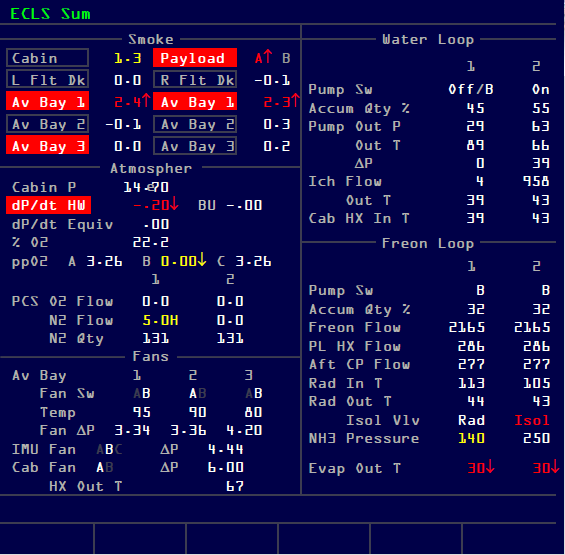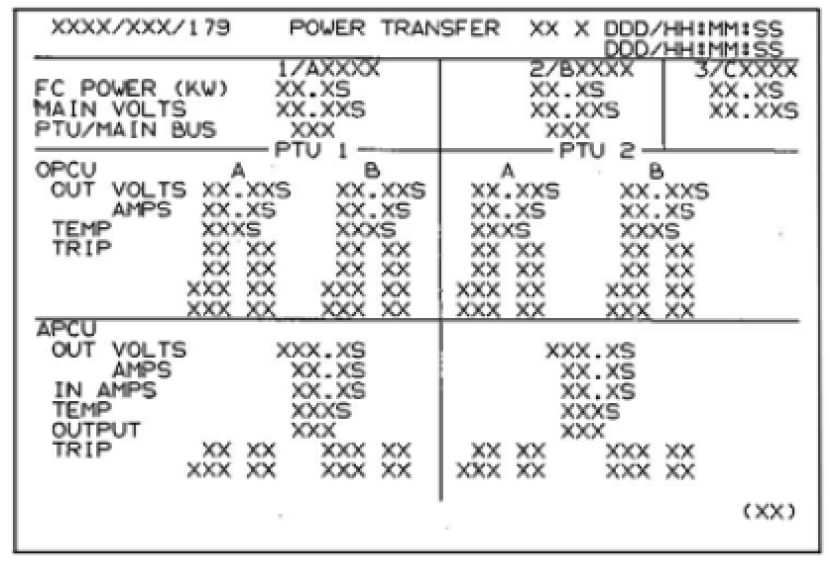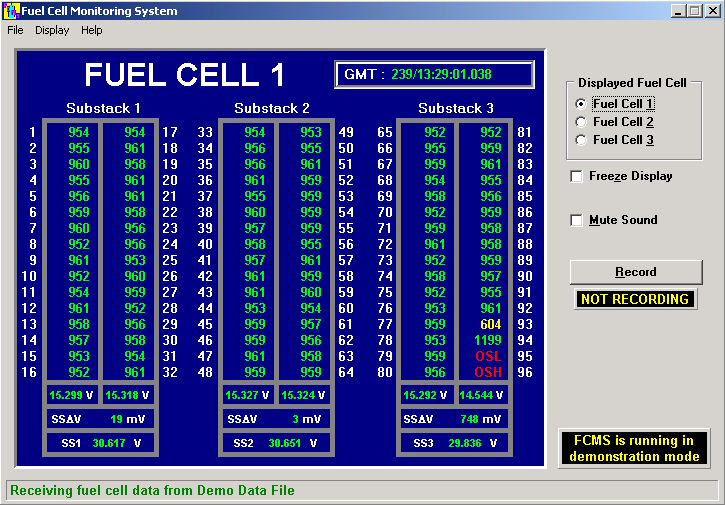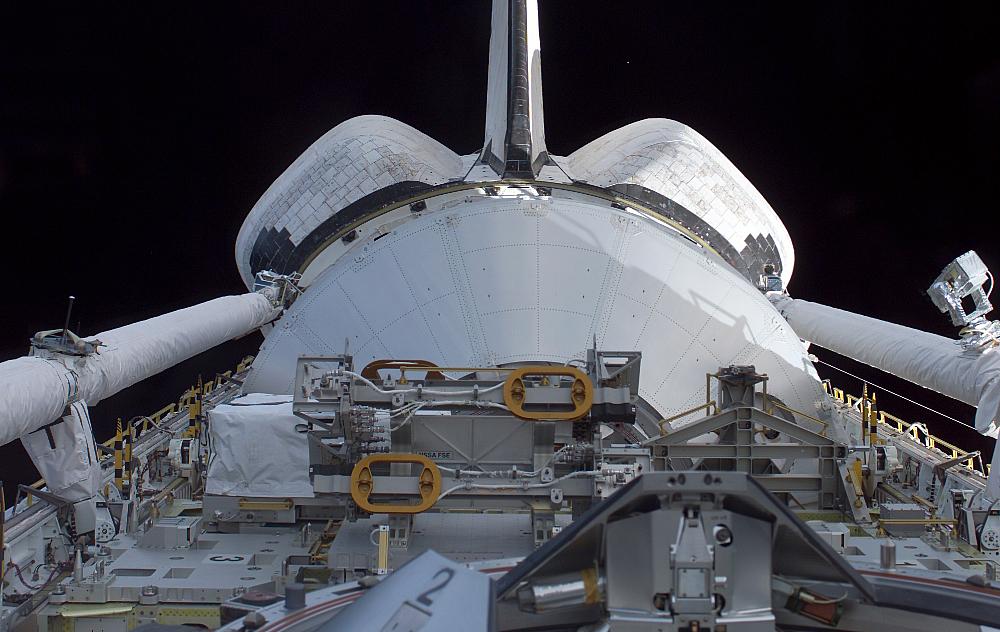| CREW DISPLAYS |

|
I was a core member of the Cockpit Avionics Upgrade project (1999-2004), which was a redesign of the Shuttle computer displays. With strict design criteria imposed by the Astronaut Office and Human Factors personnel, I created or helped design ~15 different displays. The project resulted in a 50% decrease in both crew workload and error rate. [PDF link]
|

|
I designed 2 different early draft versions of Orion spacecraft cockpit displays (circa 2010). One of them is linked at left, for the Atmospheric Revitalization System.
|

|
With the limitations and constraints of the Shuttle flight software and display capabilities, I created the display for the crew to monitor the Station to Shuttle Power Transfer System (SSPTS). This was done in conjunction with the corresponding CAU display, as both projects were active at the same time. These displays had some innovation in presenting information to the crew, as some of the parameters were not available elsewhere.
|
| OTHER GRAPHICAL USER INTERFACES |
| |
In my early career in Flight Design and Dynamics (1988-1995) I created graphical user interfaces for Unix-based applications and designed the main display for my Mission Control console position, which was used for the last 15 years of the Shuttle program.
|

|
I storyboarded 2 different applications for the Shuttle’s Payload & General Support Computers (PGSCs) that were then coded by a software developer. I worked with the programmers to maintain the desired look and feel of the output display and menu structure given the various parameters that the programs had as inputs.
I storyboarded and provided upgrades to 2 other PGSC applications at the request of the crew office, which were both procedural and safety-related. I uncovered a serious error in one of the already-approved programs that could have resulted in the potential loss of crew had the application been used in the manner it was intended.
Link at left is to an excerpt from the PGSC applications users' guide (2009), which I also wrote, showing these 4 PGSC applications (last modified between 2001 and 2007). [PDF link]
|

|
I created a simple HTML website (2000) presenting various Shuttle mechanical structures (in particular, the payload bay doors) with photos and videos taken in-flight to show the user what visual cues to look for at various time frames in the flight. This supplemented the flight procedures, which only had line drawings. The entire set of web pages with photos and video fit onto a compact disc, and several crews requested to fly a copy of the CD as additional training material in flight. This web-based material was modified from HTML 3 into HTML 5 in 2016 for ease of video embedding, and is visible using the Chrome browser. (Updated at various times through 2005)
|

|
I was a member of a knowledge capture team (2007-2009) that extracted useful “lessons learned” information from Apollo-era documentation and reformatted it for current technology, to be used in Constellation design and methodology. The information was presented in PowerPoint and captured in streaming video (with Microsoft Producer), with details in collaborative project management “wiki” websites (SharePoint). I wrote a paper on the project and presented it at an international conference in 2009, and the paper was later published in the journal Acta Astronautica. [PDF link]
|
| |
In the Oil & Gas industry (2013-2016), I had the opportunity to work with a multimedia specialist to create e-Learning training material for offshore workers, in the form of streaming video and PowerPoint presentations.
|





